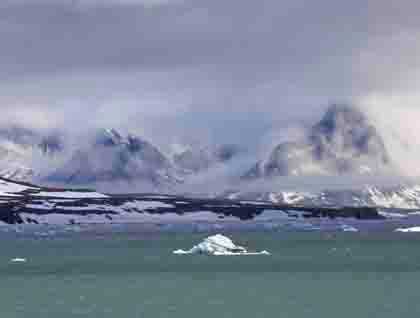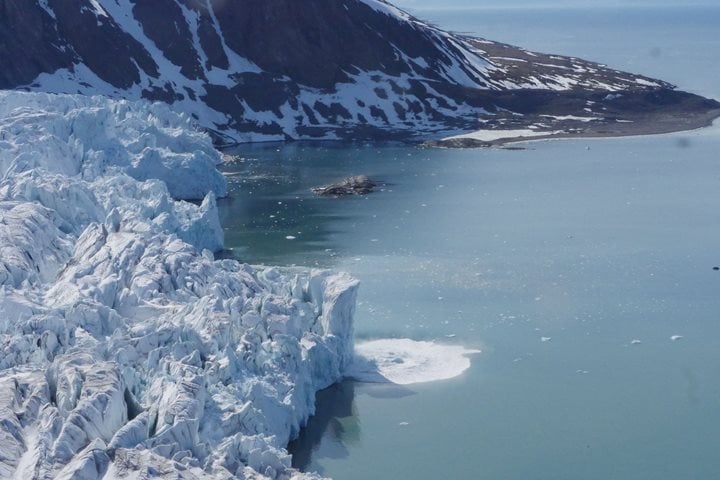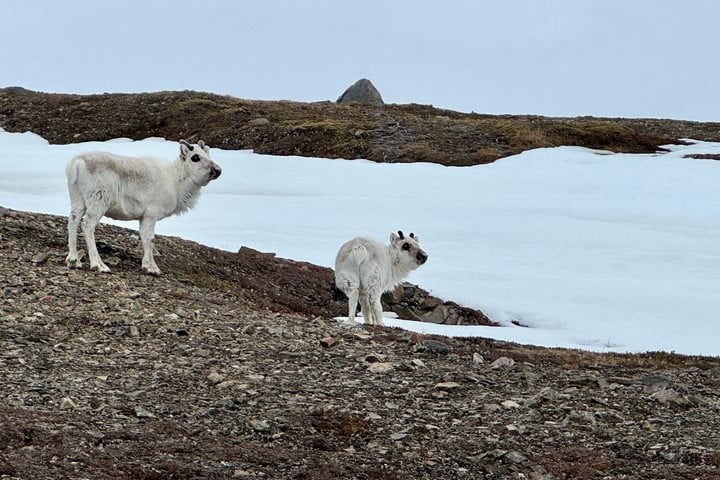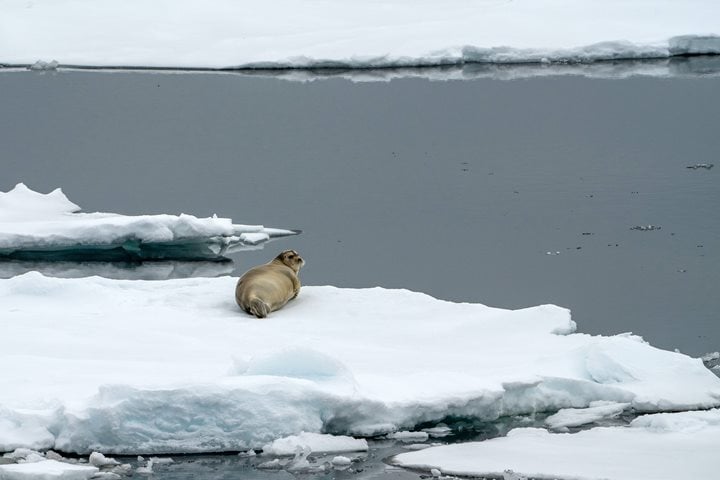Today National Geographic Explorer cruised south along the west coast of Spitsbergen Island before exploring the southernmost fjord of the archipelago. While the morning had its share of low clouds, the afternoon revealed one of the most majestic fjord systems in Svalbard.
Exploring the deep reaches of Hornsund (a 16-mile-long fjord) we were rewarded with the breathtaking landscape of dramatic peaks, tidewater glaciers, and our first polar bear sighting of the expedition. With closer inspection we could see what appeared to be a large bear lying on its stomach with its back feet displayed well enough to make out its black pads. While shallow water prevented us from bringing the ship to shore, we were overjoyed by our first polar bear sighting here in the Arctic.
Moving further around the fjord we were blessed by the dramatic atmosphere of clouds fluidly moving around the pointed peaks that inspired the name Spitsbergen, meaning “pointed peaks.” Nesting black-legged kittiwakes swarmed like bees along the edges of some of the vertical faces, providing testament to the healthy waters that surround and provide food for the birds and their fledglings.
Horn Sound (Hornsund) received its name in 1610 when explorer Jonas Poole sent a party ashore who returned with a reindeer antler. Mistaking antler for horn, this name stuck and while it was a marginal habitat for reindeer we did see evidence of their presence upon making our first landing at Gashamna (Goose Bay).
Walking amongst the barren polar desert we soon came upon unique and impressive remnants of a hut built inside a circle of whalebones. Whilst British whalers did not occupy this area when Jonas Poole came through in 1610 they did establish whaling operations here from 1618-1650. Whalebones scattered along the coast are relics of that era and helped to tell the story of an interesting part of the history of the archipelago. The red bricks nearby and wooden structure inside the circle of skulls helped to tell another part of the history that started in the 1700s when the Russian Pomor hunters, followed by the Norwegians, came to Svalbard to hunt and trap the animals today we hope to see.







